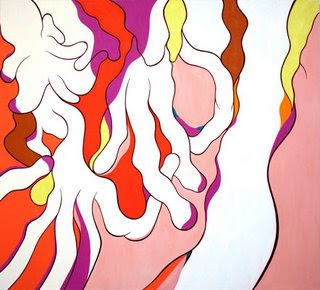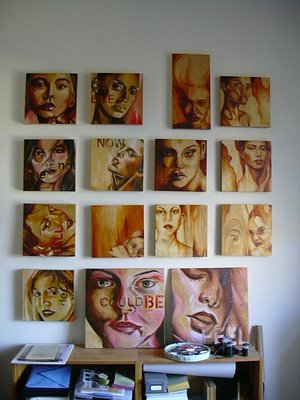BETWEEN THE LINES: AMANDA CHURCH AT MICHAEL STEINBERG FINE ART

The purpose of imagination is to see. Amanda Church understands that it takes very little to allow us to depart from the real into the imagined, and she provides these elements in her paintings as an entry into the mystery that separates the sensory from what is useful in everyday life. The type of experience they engender can be found easily in nature, like looking for the constellations in the night sky, or divining meaning from tea leaves. Three elements are actively at work in these images: lines, color, and perspective, and each complicates the other two. Looking at “Flash Point” (2006) for instance, we may at first see only areas of color and forms that suggest hands, feet, and the profile of a human face. The shapes inferring human form are not depicted straightforwardly, but as if a picture was taken from so close to its subject that all the details became blurred. Also, Church cuts across the “objective” of the painting with a scrim of other lines that disjoint i...

